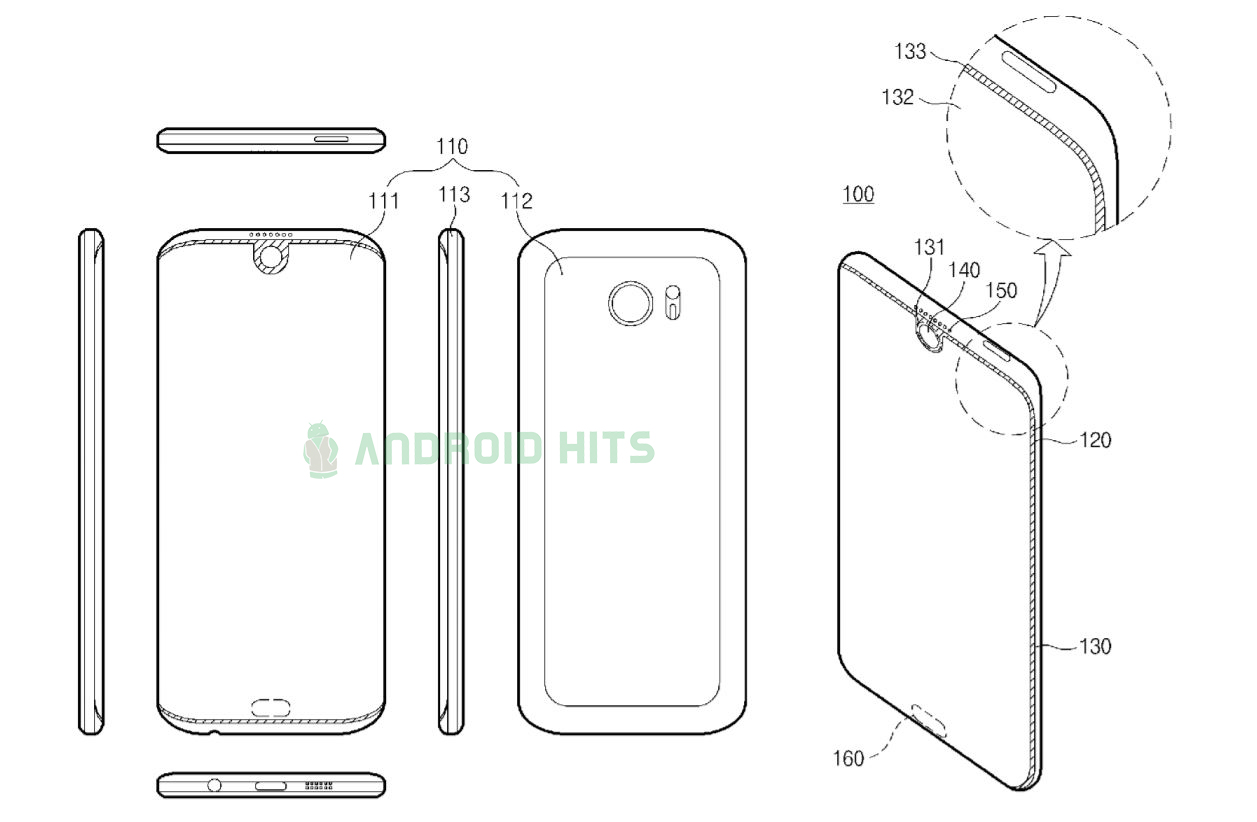Top leading smartphone brands are nowadays working on their devices with cutting-edge technology embedded ever than before. Many patent files and prototypes have exposed the brands’ plans to turn 2018 into an innovative year in Smartphone era. In the meantime, Vivo had showcased the first smartphone with an in-screen fingerprint scanner, and Samsung secretly showcased a foldable smartphone named Galaxy X. Also, several latest patents from the tech giants have shown a groundbreaking level of smartphones ahead. Now, another patent filing published on WIPO (World Intelligent Property Organization) by Samsung shows a stream of devices with many advancements in technological aspect. The patent schematics showed in the patent details reveal an upcoming series of flagship level smartphones with ultra-premium features.
One of the main highlights in the patent sketches is the top-notches on the display of the devices, which we have seen in Andy Rubin’s Essential PH-1 and Apple iPhone X. There are plenty of similarly designed display notch been registered in WIPO, with the one similar to Essential PH-1 and the other one to iPhone X. There is also another one a unique style of the notch on the top of the display, but the camera notch comes near to the right corner. The narrow bezel on the top is apparently not enough to hold the camera sensor wholely but carries other sensors and front speaker. It has a similarly trimmed bezel on the bottom edge, not entirely removed. One of the devices has a complete bezel-less design with just the notch only remains on the top, and the speaker grill is under the display, it seems.
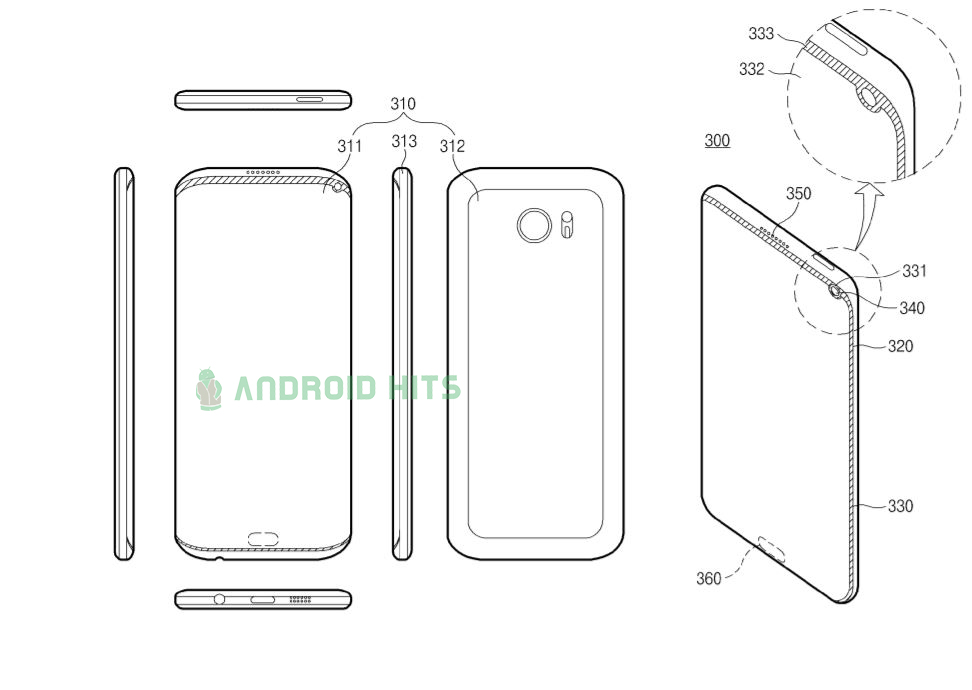
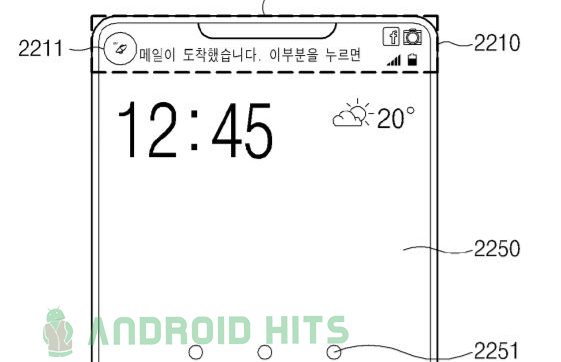
Surprisingly, the patent details reveal that the smartphones will be manufactured with a fingerprint scanner fitted under the display, to overcome the design issues while moving the fingerprint scanner from the front; and to ensure more accurate or efficient biometric scanning. Unlike the Vivo did, the fingerprint scanner will be slightly moved downwards and will come in the position of softkey navigation bar, so that the Home button on-screen itself will act as the fingerprint scanner.
Coming to the other physical characteristics of the smartphone designs, Samsung still keeps the 3.5mm headphone jack at the bottom alongside the USB Type-C port. As there is no more room for buttons on the edges, the power button is moved to the top edge. But there is no sign of curved edges on the display, but the curves are visible on the corners.
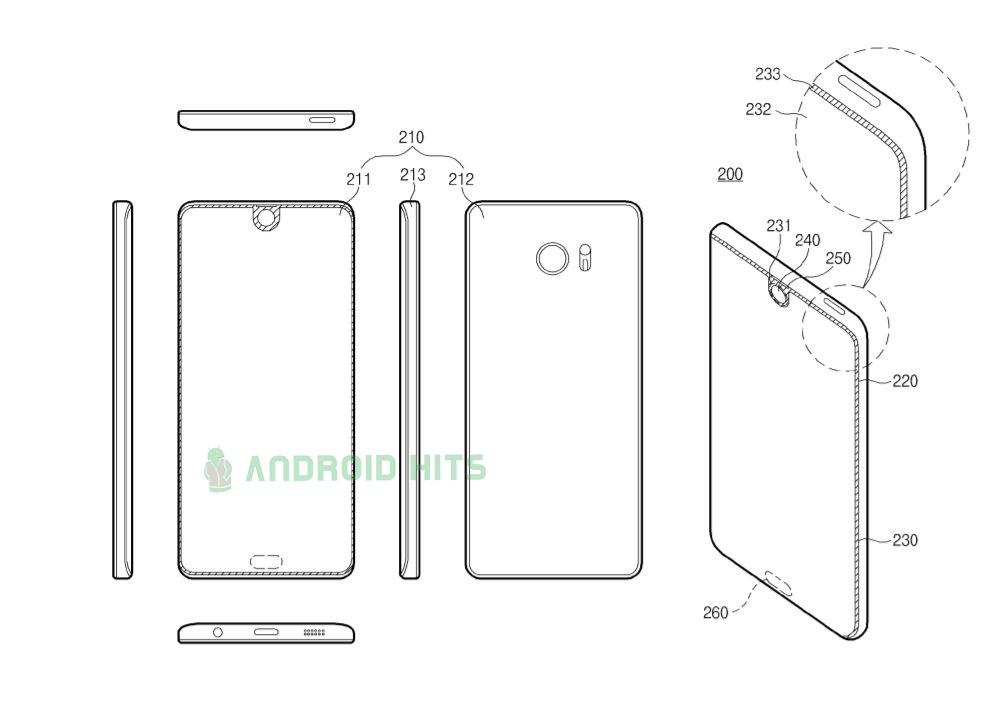
It seems that the Samsung is working hard on the UX designing of the future smartphones including the ones in the above patent and the alleged foldable smartphone. In order to avoid the compatibility issues with the top notch, the User Interface also allows the user to resize the visible area to output a better vision. Also, it supports multi-window mode, taking advantage of the taller display with notch cut. The notification bar is shown at the top as usual, but it can also be moved to the bottom of the screen, controlled by the navigational bars to ease the smartphone usability. The on-screen nav bar is also can be customized, and can add or edit app shortcuts or options to the “recent windows” button position. Samsung has included many swipes and touches gestures, even supported by the navigational bar. One of the main highlighted things is the Force Touch support for the UX, supported by the 3D-touch enabled display panel, providing many force touch gestures which users can try on.
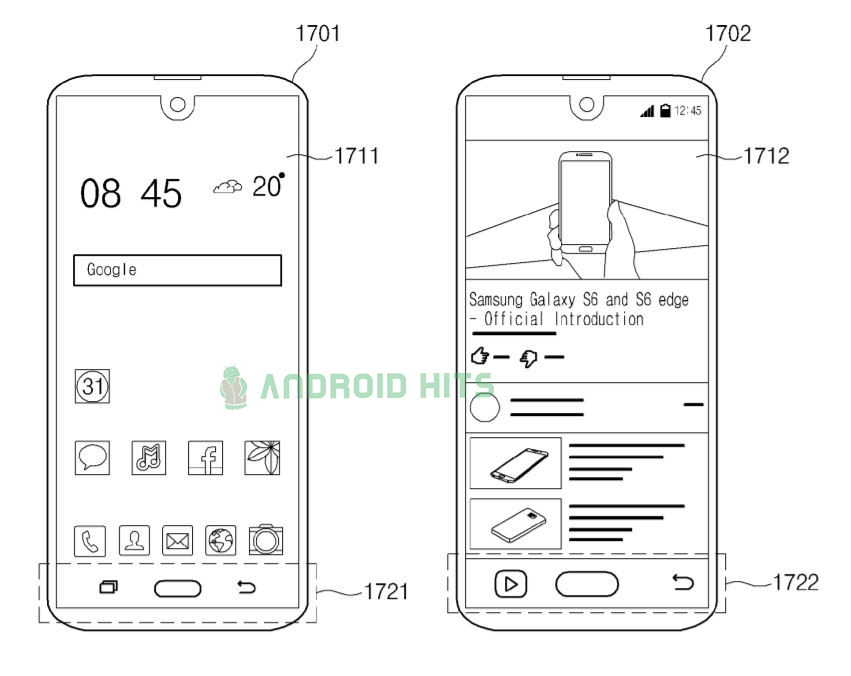
After all, the display is said to have an aspect ratio of 19:9, which is even taller than the 18:9 or 18.5:9 ratio in contemporary design. The display panel would be made of the LCD, LED, OLED or MEMS technology (Micro-Electro-Mechanical Systems Switching mechanism to change pixels), with a possible support for Holographic Projection from the screen itself. The Hologram Projection feature can project the screen elements into the air without any additional medium. However, Samsung is not always likely to implement everything practically, whatever they gain the patent. Maybe we could see these features in the near future.
So, What is it?
Taking account of recent patents by Samsung, the Korean electronics giant seems to have gotten something quite big under their sleeves. The smartphones shown in the patented files can be concerned as the upcoming Samsung Galaxy Note 9, but we cannot make sure about the display notch and Hologram projection. The company is getting ready to launch the Samsung Galaxy S9 in MWC 2018 next month, but we cannot anticipate these patented features to be embedded in the new flagship.
We will be back with more updates soon. Stay tuned!

